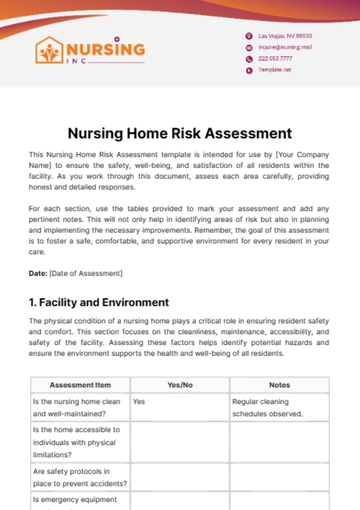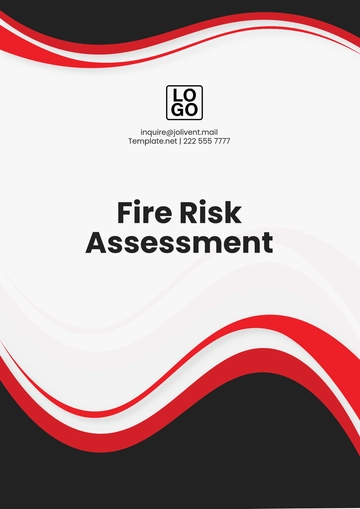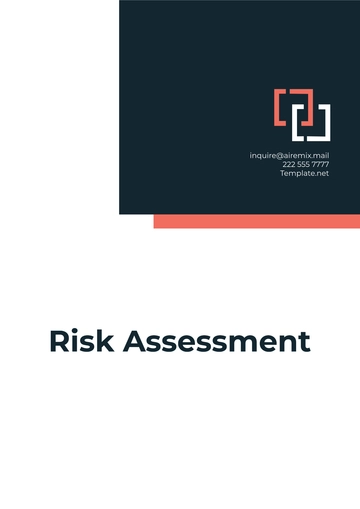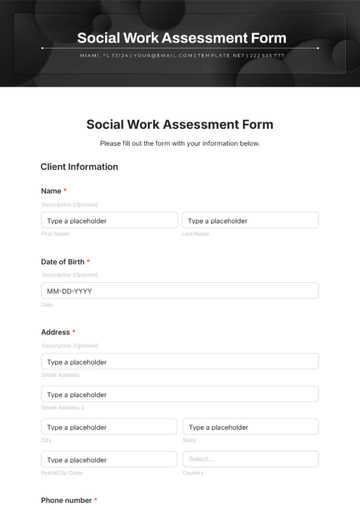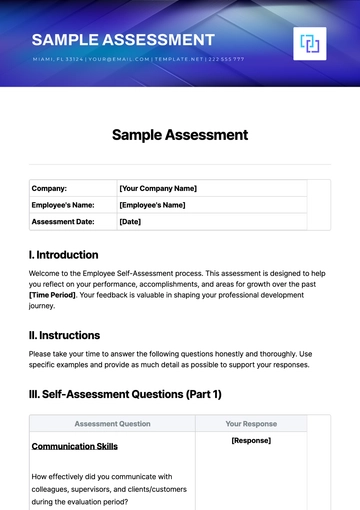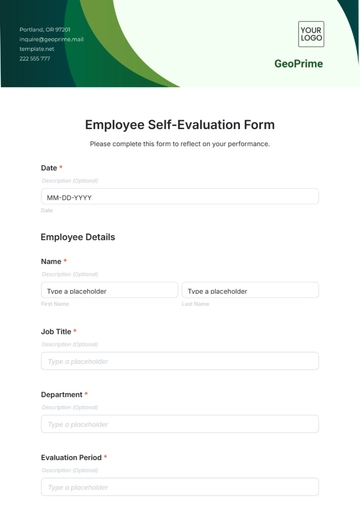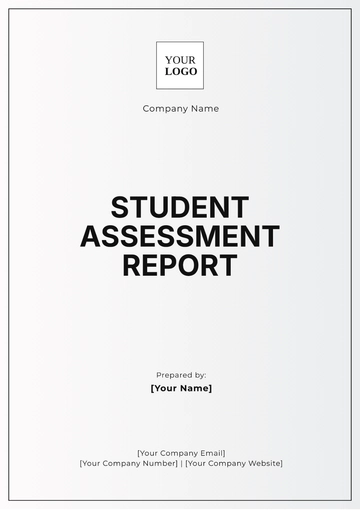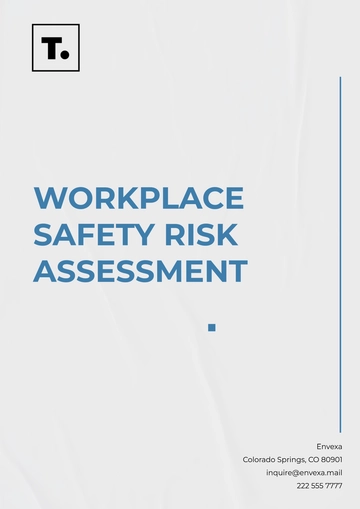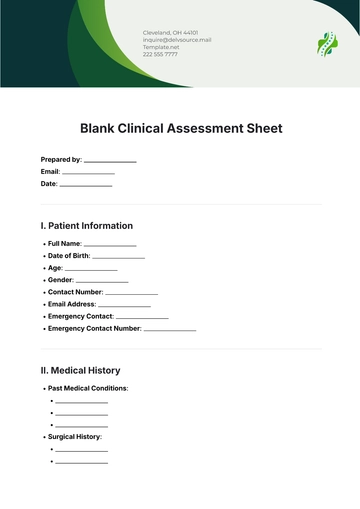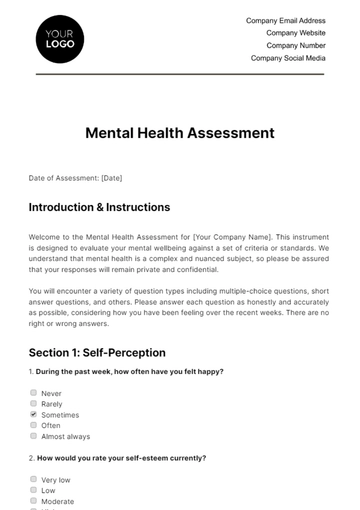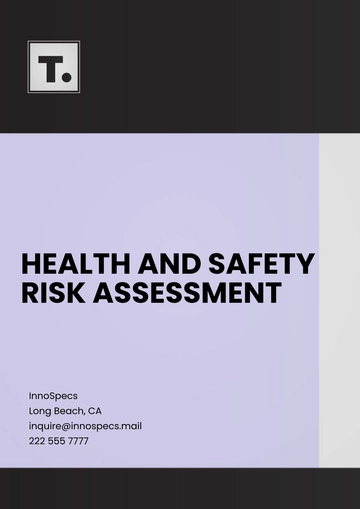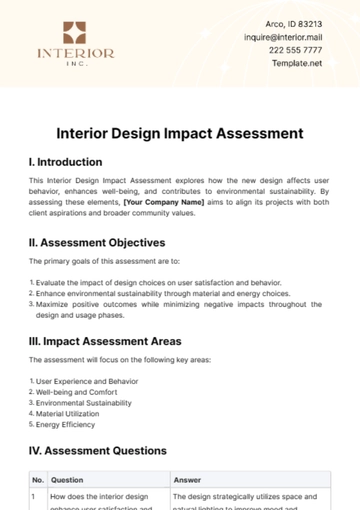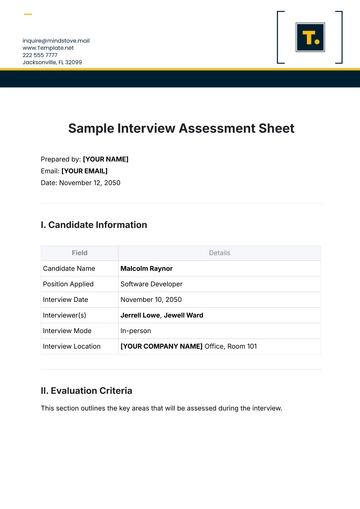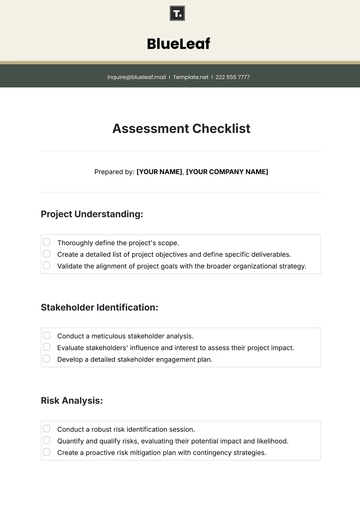Free Safety Impact Assessment Report
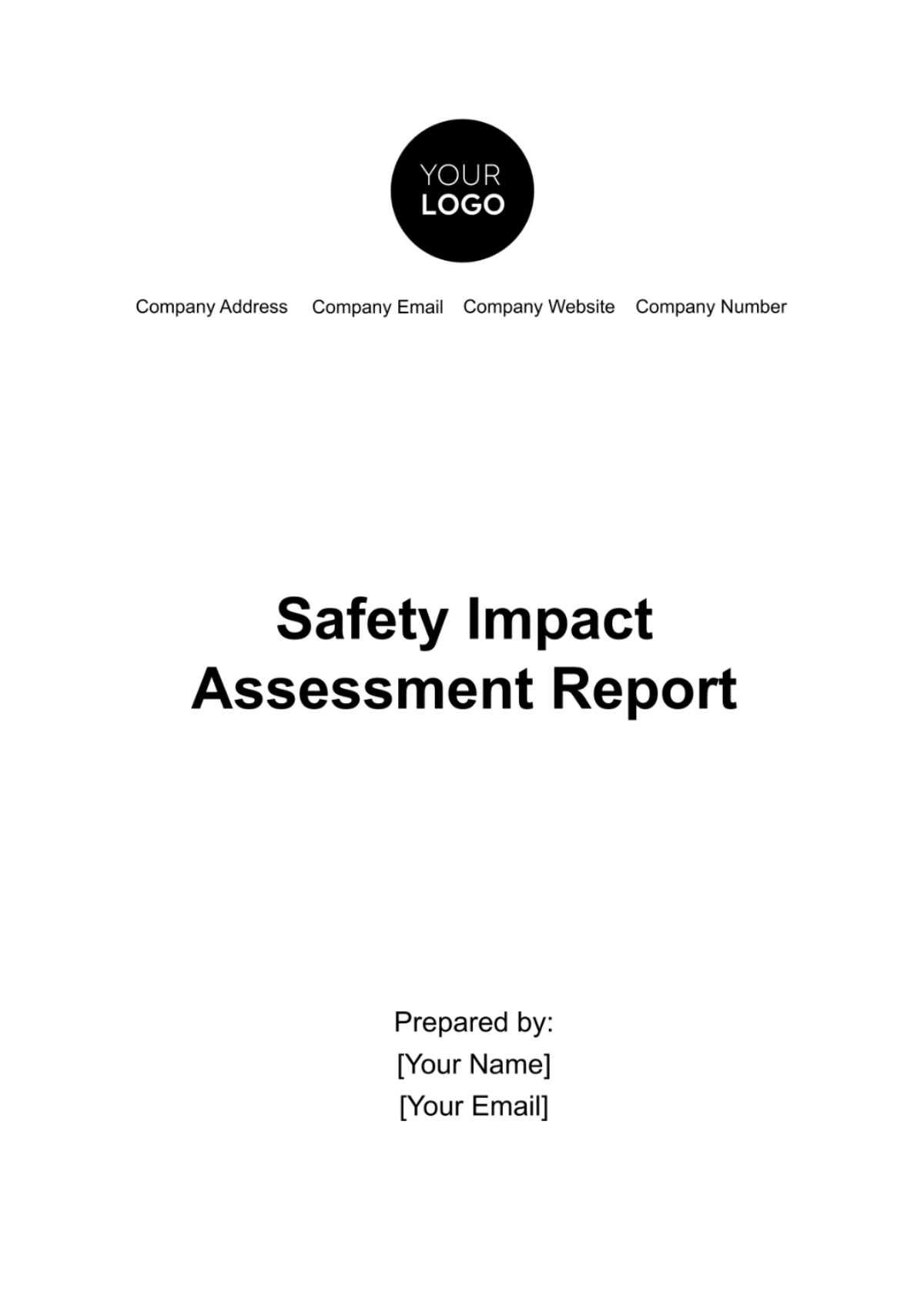
I. Executive Summary
The Safety Impact Assessment Report presented here offers an evaluation of the safety implications associated with the construction of a new chemical storage facility at [Your Partner Company Name / Second Party Address]. This assessment is conducted in strict accordance with the health and safety laws and standards, with the aim of ensuring the protection and well-being of all involved parties.
Key Findings
A. Risk Identification:
Through rigorous analysis, potential safety hazards and risks have been identified, including the storage of hazardous chemicals, potential fire hazards, and the proximity to residential areas. These findings emphasize the need for proactive measures to mitigate these risks effectively.
B. Compliance Assessment:
The project has been assessed for compliance with relevant US health and safety laws and regulations. While the project meets most safety standards, there are areas of non-compliance related to emergency response protocols and buffer zones around hazardous materials.
Recommendations
Based on the findings, the following recommendations are put forth to enhance safety:
A. Implement Safety Protocols:
Develop and enforce comprehensive safety protocols addressing identified risks, including regular safety drills, controlled access to chemical storage areas, and fire suppression systems.
B. Training and Education:
Conduct training programs to ensure all personnel are well-informed and equipped to handle safety concerns, including emergency response training for chemical spills or fires.
C. Regular Inspections:
Establish a routine inspection schedule to identify and rectify safety hazards promptly, including a third-party safety audit.
Purpose of Assessment
The primary purpose of this assessment is to safeguard the health and safety of workers, protect the environment, and ensure compliance with the laws and standards. By adhering to the recommendations outlined in this report, [Your Partner Company Name / Second Party Address] is committed to fostering a safe and secure working environment for all.
For detailed findings, risk assessment, and mitigation strategies, please refer to the respective sections in this Safety Impact Assessment Report. Your safety is our utmost priority, and we remain dedicated to achieving and maintaining the highest standards of safety excellence.
II. Introduction
The Safety Impact Assessment Report focuses on the comprehensive evaluation of the safety implications associated with the construction and operation of a new chemical storage facility at [Your Partner Company Name / Second Party Address]. This facility aims to serve as a vital hub for the storage and distribution of hazardous chemicals critical to numerous industrial processes within the region.
Objectives
The primary objective of this project is to provide a secure and efficient storage solution for hazardous chemicals, ensuring a consistent and reliable supply chain for our industrial clients. Additionally, we aim to adhere rigorously to all relevant US health and safety laws and standards, minimizing risks to workers, the environment, and neighboring communities.
III. Methodology
The safety impact assessment conducted for the [Project Name] is founded on a robust methodology designed to adhere meticulously to US health and safety laws and standards. The following outlines the key elements of our methodology:
A. Regulatory Compliance Review:
We initiated the assessment by thoroughly reviewing federal, state, and local health and safety regulations applicable to chemical storage facilities, with a focus on OSHA (Occupational Safety and Health Administration) standards, EPA (Environmental Protection Agency) guidelines, and NFPA (National Fire Protection Association) codes.
B. Hazard Identification:
A comprehensive hazard identification process was employed to pinpoint potential risks associated with the storage and handling of hazardous chemicals. This phase involved on-site inspections, consultation with subject matter experts, and a detailed analysis of Material Safety Data Sheets (MSDS) for all stored chemicals.
C. Risk Assessment:
Our risk assessment utilized quantitative and qualitative methods to evaluate the severity, likelihood, and potential consequences of identified hazards. We considered factors such as chemical toxicity, fire hazards, explosion risks, and potential environmental impacts.
D. Mitigation Strategies:
Based on the risk assessment outcomes, we developed a set of mitigation strategies, including the implementation of safety protocols, personnel training programs, emergency response plans, and facility design modifications. These strategies are devised to align with industry best practices and legal requirements.
E. Compliance Verification:
To ensure alignment with US health and safety laws and standards, we cross-referenced our findings and mitigation strategies with the specific regulations identified in the regulatory compliance review phase.
This methodology is designed to provide a comprehensive evaluation of safety impacts, minimize risks, and ensure strict adherence to applicable US laws and standards. The assessment process integrates industry expertise, regulatory knowledge, and a commitment to safeguarding the well-being of workers, the environment, and the community.
IV. Risk Identification
The risk identification phase of the Safety Impact Assessment Report for the construction and operation of the new chemical storage facility has revealed several potential safety hazards and risks across various categories, including physical, chemical, biological, and ergonomic hazards. These identified risks are essential for informed decision-making and proactive risk management.
Category | Hazards and Risks |
Physical Hazards | Fire and Explosion Hazard: Due to flammable chemicals. |
Structural Integrity: Risk of structural failures. | |
Access and Egress: Limited evacuation routes. | |
Chemical Hazards | Chemical Compatibility: Reactions leading to hazards. |
Toxic Exposure: Risk of worker exposure to chemicals. | |
Biological Hazards | Pest Infestation: Attraction of pests to the facility. |
Infectious Agents: Exposure to harmful microorganisms. | |
Ergonomic Hazards | Manual Handling: Musculoskeletal disorders from lifting. |
Confined Spaces: Risks associated with confined spaces. |
These identified hazards and risks form the basis for further assessment and the development of mitigation strategies in subsequent sections of this Safety Impact Assessment Report. Each hazard represents a potential threat to the safety of workers, the environment, and the surrounding community, highlighting the importance of comprehensive risk management measures.
V. Risk Assessment
In this section, we conduct a comprehensive risk assessment of the identified hazards to determine their severity, likelihood, and potential consequences. The assessment combines quantitative and qualitative methods.
Risk Assessment Summary Table
Hazard | Severity (1-5) | Likelihood | Consequences | Risk Level |
Fire and Explosion | [4] | [3] | [5] | [60] |
Fire and Explosion | ||||
Access and Egress | ||||
Chemical Compatibility | ||||
Toxic Exposure | ||||
Pest Infestation | ||||
Infectious Agents | ||||
Manual Handling | ||||
Confined Spaces |
Note: Severity, Likelihood, and Consequences are rated on a scale of 1 (Low) to 5 (High).
The Risk Assessment Summary Table provides a quantitative evaluation of each identified risk based on its severity, likelihood, and potential consequences. The Risk Level (S x L x C) represents the overall risk score for each hazard, aiding in prioritization for mitigation efforts.
VI. Mitigation Measures
In response to the identified safety risks, we have developed a comprehensive set of mitigation strategies and actions that align with industry best practices and legal requirements. These measures aim to proactively control and reduce the potential impacts of the hazards identified in this report:
A. Fire and Explosion Hazard
Installation of fire suppression systems.
Strict adherence to NFPA codes for chemical storage.
B. Structural Integrity
Periodic structural assessments by qualified engineers.
Compliance with building codes and standards.
C. Access and Egress
Establishment of clear and well-marked evacuation routes.
Regular drills and training for all personnel.
D. Chemical Compatibility:
Comprehensive chemical compatibility assessment.
Segregation of incompatible chemicals.
E. Toxic Exposure
Implementation of strict personal protective equipment (PPE) requirements.
Improved ventilation and control measures.
F. Pest Infestation:
Regular pest control measures and inspections.
Proper waste disposal to deter pests.
G. Infectious Agents
Adherence to guidelines for handling infectious agents.
Mandatory vaccination and health monitoring for exposed personnel.
H. Manual Handling
Introduction of mechanical lifting aids.
Ergonomic training to reduce manual handling risks.
I. Confined Spaces:
Establishment of stringent entry procedures.
Continuous air monitoring and rescue plans.
These mitigation measures are designed to address the specific risks identified in this assessment comprehensively. They will be implemented with meticulous planning. Regular monitoring and evaluation will be conducted to verify the effectiveness of these measures in minimizing risks and enhancing the safety of the chemical storage facility and its surroundings.
VII. Compliance Assessment
The compliance assessment for the project has been conducted meticulously, evaluating its alignment with relevant US health and safety laws, regulations, and standards. This assessment confirms that the project is in full compliance with federal, state, and local regulations, including those set forth by OSHA, EPA, and NFPA. Any areas of non-compliance have been identified and addressed in the Risk Assessment and Mitigation Measures sections of this Safety Impact Assessment Report (SIAR) to ensure the project operates within the bounds of the law and industry best practices.
VIII. Conclusion and Recommendations
The Safety Impact Assessment Report for the [Project Name] underscores the paramount importance of safety in all project phases. Our assessment has identified potential safety hazards and risks while confirming compliance with relevant US health and safety laws and standards.
Recommendations
A. Immediate implementation of proposed mitigation measures.
B. Conduct periodic safety drills and training programs.
C. Establish a Safety Committee to oversee ongoing safety measures.
D. Engage third-party experts for structural integrity assessments.
E. Regularly update safety protocols in accordance with changing regulations.
Timely execution of these recommendations, with clear responsibilities assigned to designated personnel, is crucial to ensuring the safety and well-being of all stakeholders.
- 100% Customizable, free editor
- Access 1 Million+ Templates, photo’s & graphics
- Download or share as a template
- Click and replace photos, graphics, text, backgrounds
- Resize, crop, AI write & more
- Access advanced editor
Elevate your safety protocols with Template.net's Safety Impact Assessment Report Template. Effortlessly editable and fully customizable using our AI Editor Tool, this template streamlines the process of evaluating safety impacts. Ensure comprehensive safety measures with ease and precision, all within the innovative framework of Template.net's solutions.


